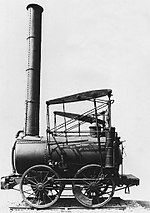Brockmoor Halt railway station
Disused railway stations in DudleyFormer Great Western Railway stationsPages with no open date in Infobox stationRailway stations in Great Britain closed in 1932Railway stations in Great Britain opened in 1925 ... and 3 more
Use British English from January 2017West Midlands (county) building and structure stubsWest Midlands (region) railway station stubs

Brockmoor Halt was a small railway stop on the Wombourne Branch Line in West Midlands, England. It had very poor patronage and, along with the rest of the line's passenger stations, was closed just seven years after its introduction by the Great Western Railway in 1925. The halt served the settlement of Brockmoor, which is now part of the Brierley Hill area. Brierley Hill railway station was closer to Brockmoor's small High Street than the halt named after it. Brockmoor Halt remains in place with the platforms and single rail including the bridge to Kingswinford Junction but it has been fenced off and mothballed since 1994.
Excerpt from the Wikipedia article Brockmoor Halt railway station (License: CC BY-SA 3.0, Authors, Images).Brockmoor Halt railway station
Moor Street,
Geographical coordinates (GPS) Address Nearby Places Show on map
Geographical coordinates (GPS)
| Latitude | Longitude |
|---|---|
| N 52.4816 ° | E -2.1335 ° |
Address
Moor Street
Moor Street
DY5 3SW , Brockmoor
England, United Kingdom
Open on Google Maps









